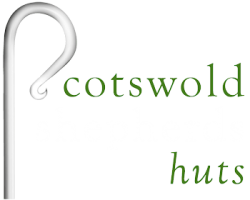
Steve Hobbs comes from a family with a feeling for iron wheeled vehicles. His father (a builder and carpenter) and brother have been collecting and restoring traction engines since the late 60’s, and family holidays were spent sleeping in dad’s restored living wagon attending steam rallies throughout Kent. Steve could drive a traction engine before he could drive a car. After a career in Graphic Design and having grown up around all things historical he fell in love with a shepherds hut and as they say the rest is history. Steve and his wife Helen created Cotswold Shepherd’s Huts to rescue them from the hedgerows and fields of Britain and restore them and bring them back to life.
An illustration drawn by my father of one of our huts.

The History behind Shepherds Huts
In the 19th and early 20th centuries, the shepherd’s hut was introduced so that the shepherd could live on the fields for extended periods of time to look after his flock day and night and was a haven of warmth and comparative comfort. Such huts were widely used throughout England and Wales and followed a similar basic design with a curved corrugated iron roof and stable door and small windows on each side so he could keep an eye on his flock. The interior was usually simply furnished and was warmed by a small cast iron stove.
Most huts were built by small agricultural engineering firms. Some huts were constructed on the farm out of locally sourced materials, but all were built using blacksmith-made forged components such as axles and draw-bars. As farming methods changed over time, the shepherd’s hut gradually disappeared from the landscape, so those original, intact examples are rare to find.
Most huts were built by small agricultural engineering firms. Some huts were constructed on the farm out of locally sourced materials, but all were built using blacksmith-made forged components such as axles and draw-bars. As farming methods changed over time, the shepherd’s hut gradually disappeared from the landscape, so those original, intact examples are rare to find.

